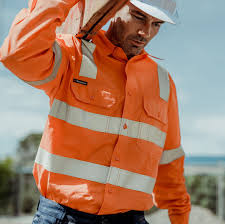china construction safety helmet colors
The Significance of Color in Construction Safety Helmets in China
The construction industry is one of the most perilous fields, and safety measures are crucial for protecting workers on-site. In China, a notable aspect of safety gear is the use of colors in safety helmets, which not only serve as a protective measure but also convey important information about roles, responsibilities, and safety protocols.
The Role of Safety Helmets
Safety helmets are essential in preventing head injuries caused by falling objects, electrical hazards, and other potential dangers found on construction sites. In China, helmets are made from durable materials and are subject to strict safety standards to ensure maximum protection. However, beyond their protective function, the colors of these helmets also play a significant role in enhancing safety and efficiency on the job site.
Color Coding System
In China, a color coding system is often used for construction helmets, where each color signifies a specific role or level of authority among workers. This system helps in quickly identifying personnel on-site, allowing for better communication and quicker response during emergencies.
1. White Helmets — Typically worn by engineers, supervisors, and project managers, white helmets indicate individuals who have a higher level of responsibility and authority on-site. Their role often involves decision-making and oversight, making it essential for others to recognize their presence easily.
2. Yellow Helmets — Commonly worn by general laborers and construction workers, yellow helmets represent the backbone of construction projects. Workers wearing yellow helmets are often involved in various physical tasks on-site, and their visibility is crucial to ensure safety while they navigate through potentially hazardous environments.
3. Blue Helmets — In some construction sites, blue helmets may be designated for skilled workers or technicians specialized in certain trades. This differentiation allows for swift identification of personnel capable of handling specific tasks, thus enhancing operational efficiency.
china construction safety helmet colors

4. Green Helmets — Green helmets are often assigned to new or inexperienced workers. This color coding alerts others on-site that these individuals may need additional guidance or supervision, ensuring that safety protocols are followed diligently until they become more familiar with their roles.
5. Red Helmets — Although less common, red helmets may be worn by safety officers or individuals responsible for enforcing safety regulations. Their presence can serve as a visual reminder that safety is paramount on construction sites and that all personnel should adhere to established protocols.
Enhancing Communication and Safety
The color coding of safety helmets is particularly effective in large construction sites, where many workers are present. By simply glancing at a worker’s helmet, team members can immediately recognize their role and the need to communicate effectively. Additionally, having a clear identification system reduces confusion in emergencies, helping to expedite rescue operations or safety drills.
Cultural Considerations
In China, the significance of colors extends beyond mere identification. Colors can carry cultural meanings and implications. For instance, red is often associated with luck and safety in Chinese culture, further emphasizing the importance of helmet colors in not only protecting workers but also fostering a positive work environment.
Conclusion
The variety of colors used in construction safety helmets in China serves far more than an ornamental purpose. They are integral to maintaining safety and promoting efficient communication on construction sites. As the construction industry continues to evolve, the responsible use of helmet colors will remain a vital aspect of worker safety, ensuring that all individuals on-site can perform their duties with the assurance that their well-being is prioritized. By adhering to these color codes, the industry reinforces its commitment to safety and professionalism, ultimately leading to safer work environments for all.
-
Top AI Safety Clothing with GPT-4 Turbo | Smart Protection
NewsJul.31,2025
-
Face Shield Safety Helmet with GPT-4 Turbo AI Safety
NewsJul.31,2025
-
CE Working Clothing for Construction & Welding Safety
NewsJul.30,2025
-
Premium Safety Helmet with Visor for Construction & Industrial Use
NewsJul.29,2025
-
High-Quality CE Working Clothing for Safety and Construction
NewsJul.29,2025
-
Premium Safety Helmet Hat with Ear Defenders, Brim & Soft Design
NewsJul.29,2025
